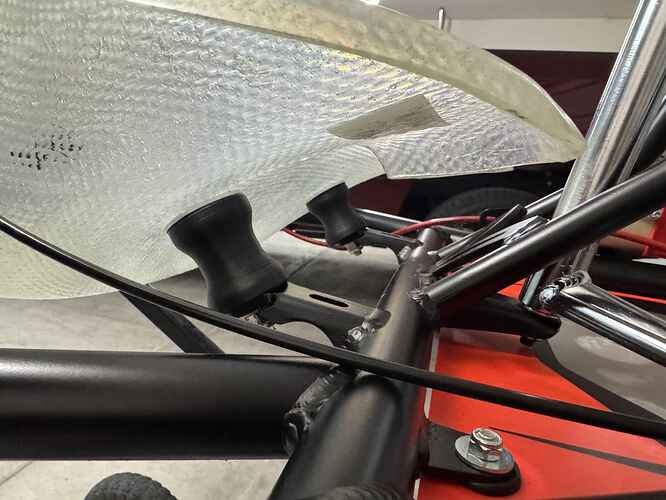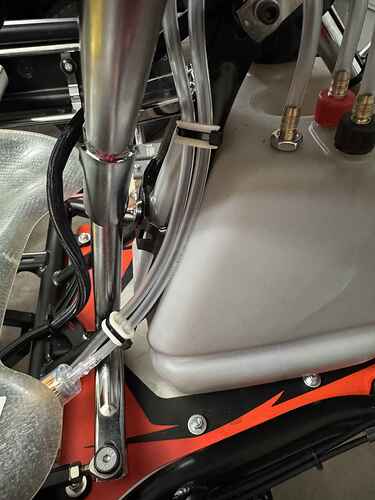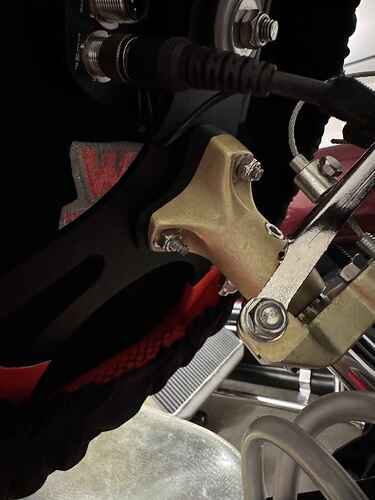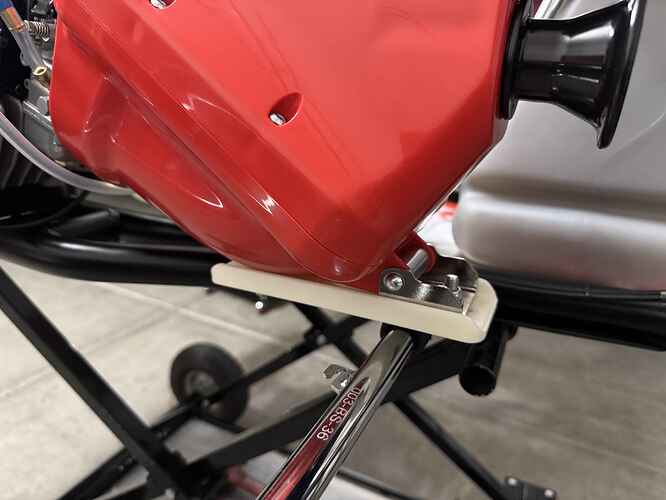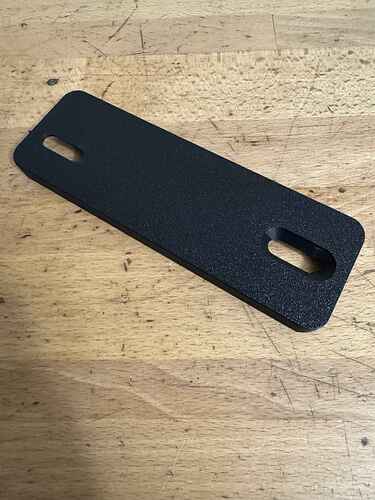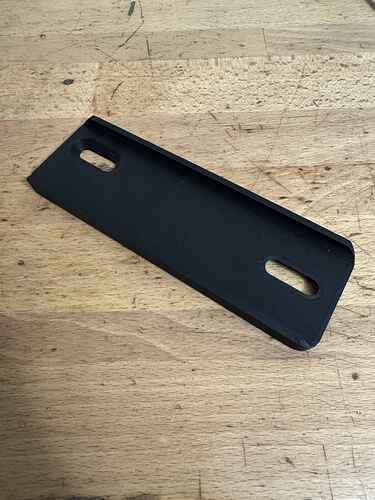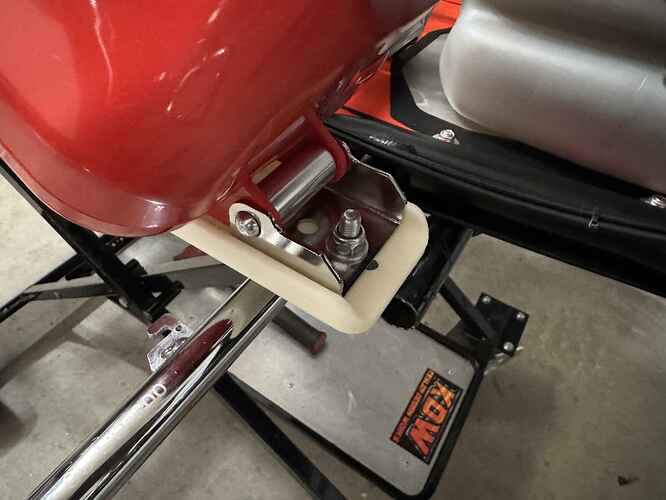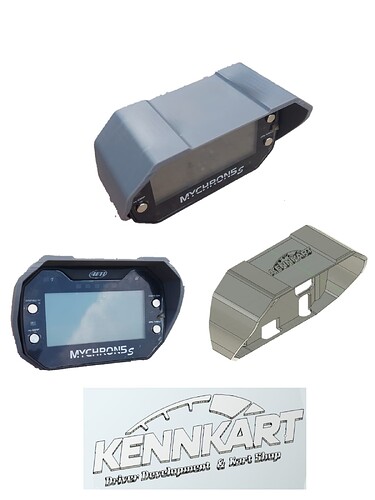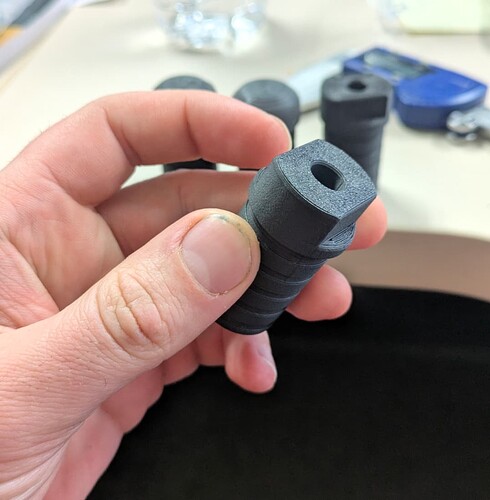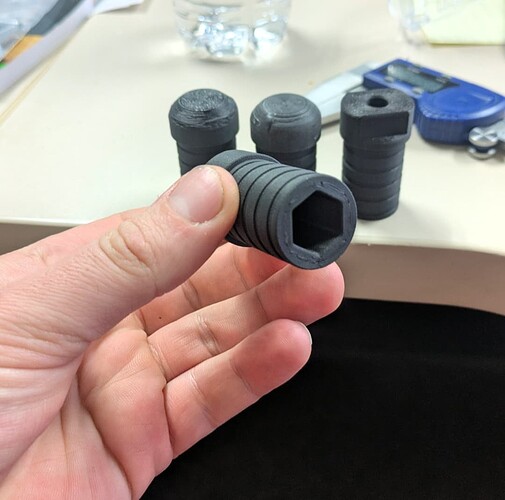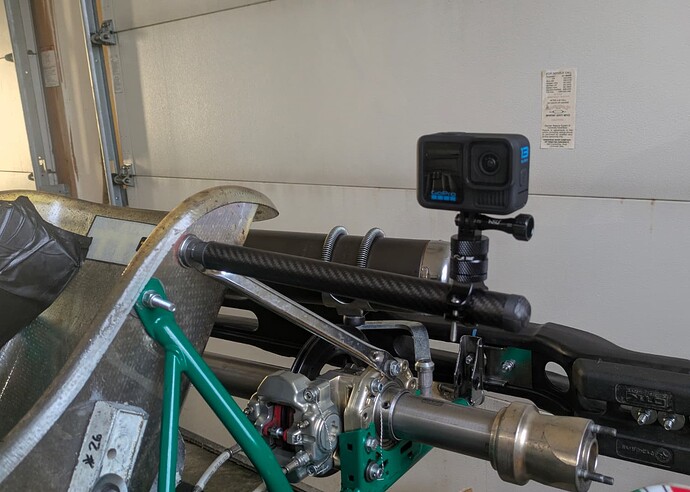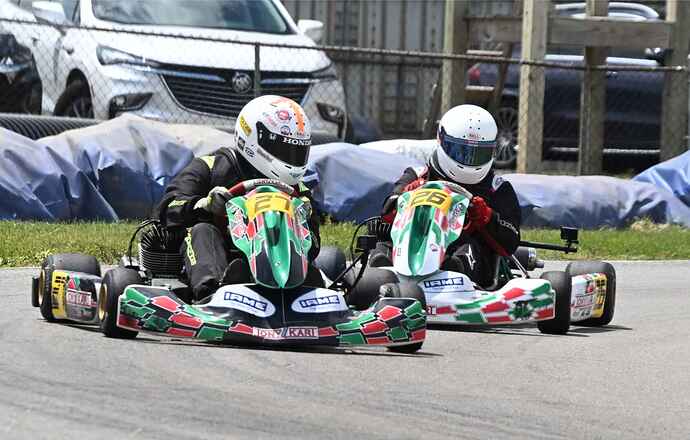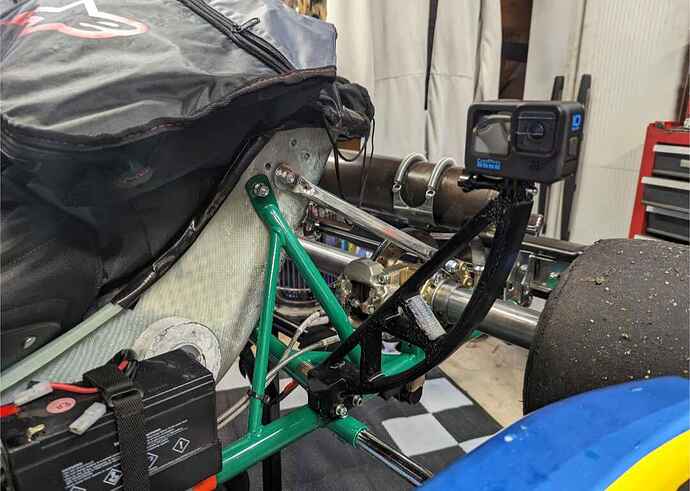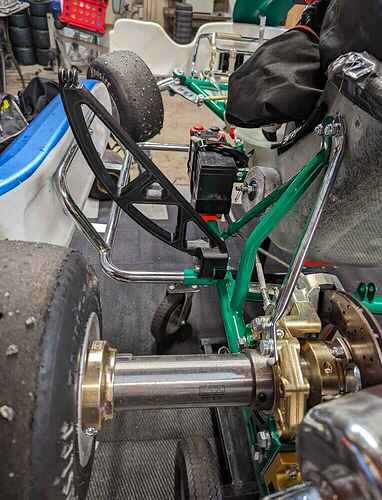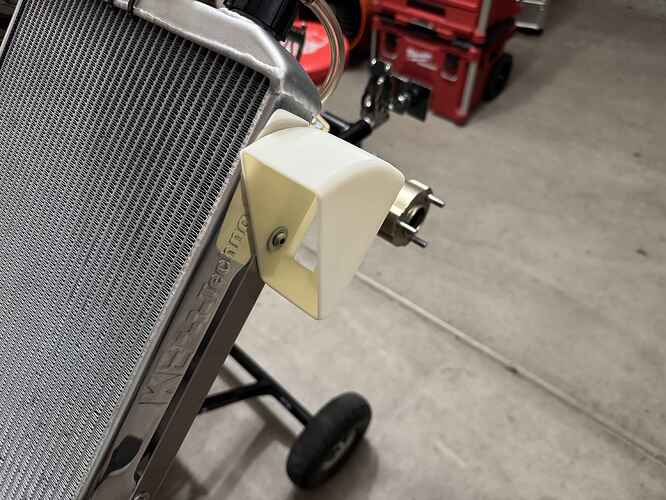Yeah I thought about those too, but with it wrapping around the front of the wheel to decrease the drag you get from a rotating wheel.
You could make a set that’s two pieces that have a uniball effect so there is no bind on the seat. Commend the amount of work to design and 3d print seat spacers ![]()
They do make some spherical like washers that do allow for some misalignment. I can probably print something similar.
Luckily I’m quite good at CAD. It probably took sub 5 minutes to draw and hit print. Within an hour I had parts ready to go.
Here you go in M8 McMaster-Carr
Made some fuel line holders, airbox bracket, and steering spacer. I ran out of black prototyping everything. All of it made in a ASA material.
I made a spare airbox bracket. Not sure if it’s going to survive the vibrations and bouncing. Worse case I just fan out a steel bracket.
Love that airbox bracket! I’d take one once you get the design dialed in!
For sure! If it doesn’t survive, I’m thinking of printing it with a cavity where I drop in a small piece of metal then continue the print so it’s embedded.
I’ll grab a photo of what it looks like without the airbox. I’m pretty happy with it.
It’s super simple. The one on the kart I just went to a hole instead of a slot where it mounts to the chassis since you cant get to it with the airbox mounted anyways. Adjustments fore and aft is done at the airbox.
Drilled an extra hole on the bracket so you can actually get to it. No clue why it’s right under the cylinder from factory. ![]()
![]()
That’s awesome, care to share the file with us?
Lemme check with my friend. Bcs hes the one who have the file.
I 3D printed some end caps for a carbon tube out of a carbon infused PETG, with a captive locknut that screws onto a long seat mount bolt.
This tube makes a great and stable go-pro mount, seen here compared against my brother with my older 3D print design that used the radiator mount.
I am also into “researching” these fans. How are yours holding? I tested mine today and after 5-6 laps they were sliding away. I think these fans work, but I am not so sure how much and if I have to go with different pressures.
I’ve been slammed and haven’t finished the design. I’m trying out something a little different on getting some airflow moving. I’ll share it once I’ve tried it out.
My son has been tinkering with them as well. Design 1 moved tons of air, the airfoils were a bit too much and too exposed to damage if you dropped a tire. It also was not quite tight enough. Ran a version 2 at the track with excellent results. However, as they have sat on the kart in the 90 plus degree TX heat inside our shop they look to have relaxed some and may not be tight enough on the spindle. On the rears, still tinkering with the best attachment design. But based on what he saw on the fronts, it will make a difference in mid-summer heat.
Let him know If he can he needs to be printing in an ABS/ASA material. It’s what I’ve been using and it’s the only things that’s been holding up to the Phoenix heat. It’s not as pretty but I found a white/natural no pigment is the best thermal and structural wise.
Big rad = big air blockage. Trying to get some extra air around the rad and to the inner edge of the LR. If it works I’ll be printing a mold and making it in carbon for the cool factor and extra 5hp.
I’ve got a laundry list of parts I’ll be putting up on my website. Just need to find the time to make it happen.
Thanks Clayton. He was working on an older Prusa MK3 that I bought during COVID. It works great with PLA but tended to be a bit stringy with PETG. It wasn’t setup properly for ABS work, with no enclosure and in his room. He just sold that one and bought a newer Bambu P1P that came in this weekend. It clearly prints much much faster and with better overall quality. Likely just the result of a few years of evolution with 3D printers. I think he plans to make his own enclosure and set it up in our shop for ABS prints.
There have been leaps and bounds in performance the past 4-5 years. It’s amazing what they can do. I purchased a Flashforge 5M Pro and it’s amazing what this $600 printer can do even versus a “Professional grade” $10K plus printer we have at work that we bought in 2019.
